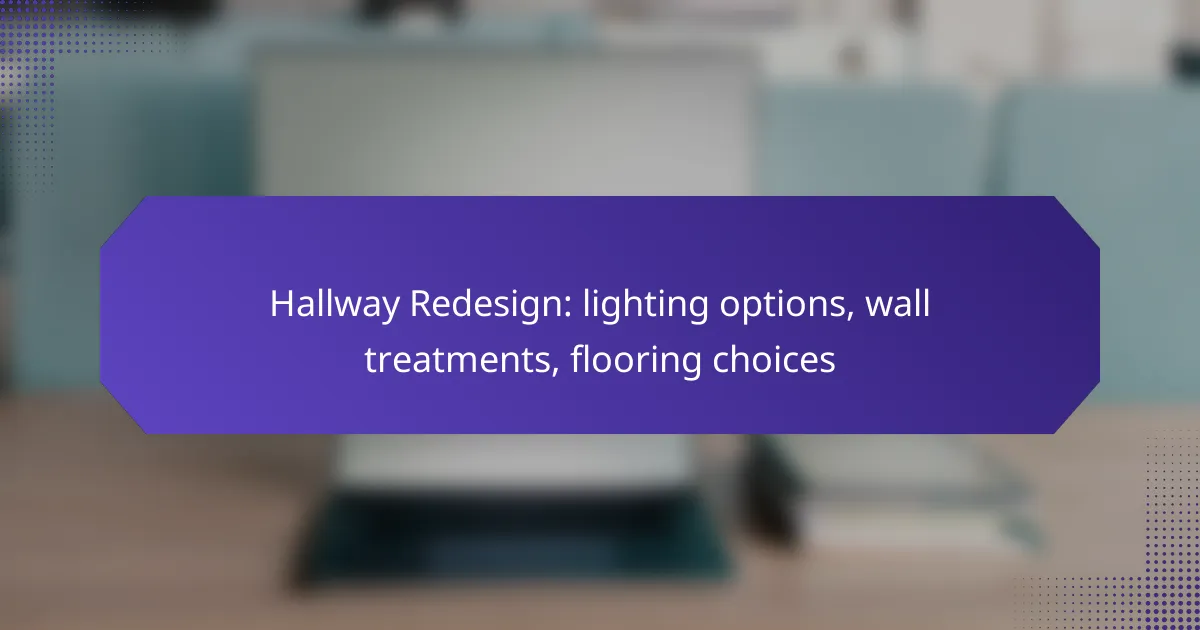Refreshing your living room can transform it into a stylish and inviting space. By thoughtfully selecting a color scheme, arranging furniture for optimal flow, and incorporating a well-designed lighting plan, you can create an environment that reflects your personal style and meets your functional needs. Consider the interplay of colors, the comfort of seating, and the balance of light to achieve a harmonious and welcoming atmosphere.

How to choose a color scheme for your living room?
Choosing a color scheme for your living room involves selecting hues that create the desired atmosphere and complement your furniture. Consider factors like natural light, room size, and personal style to ensure a cohesive look.
Neutral palettes for versatility
Neutral color palettes, such as shades of beige, gray, and white, offer great versatility in living room design. These colors create a calm backdrop that allows for easy integration of various furniture styles and accent colors.
When using neutrals, consider layering different textures to add depth. For example, combine a soft beige sofa with a textured gray rug and white curtains to create visual interest without overwhelming the space.
Bold colors for statement walls
Bold colors can transform a living room by creating a striking focal point. A single statement wall painted in a deep blue or vibrant red can energize the space and draw attention to artwork or furniture.
When opting for bold colors, balance is key. Pair a statement wall with lighter furniture and decor to prevent the room from feeling cramped. Accessories like cushions or throws in complementary shades can tie the look together.
Color psychology in living spaces
Color psychology plays a significant role in how we feel in our living spaces. For instance, blues and greens are often associated with calmness and relaxation, making them ideal for a serene living room environment.
Conversely, warmer colors like yellows and oranges can evoke energy and cheerfulness. When selecting colors, consider the mood you want to create and how different hues can influence daily interactions in the space.

What are effective furniture arrangements?
Effective furniture arrangements enhance the functionality and aesthetics of a living room by optimizing space and flow. Key considerations include the layout style, comfort of seating options, and the placement of focal points to create an inviting atmosphere.
Open layout for spacious feel
An open layout fosters a spacious feel by minimizing barriers between different areas of the living room. This arrangement allows for easy movement and encourages social interaction, making it ideal for gatherings. Consider using area rugs to define spaces without obstructing sightlines.
To achieve an open layout, position furniture away from walls and create conversational clusters. Aim for a layout that promotes flow, allowing at least 24 inches of walking space between pieces. This approach can make even smaller rooms feel larger and more inviting.
Sectional sofas for comfort
Sectional sofas are a popular choice for maximizing comfort and seating capacity in living rooms. They come in various shapes and sizes, allowing you to tailor the arrangement to fit your space. When selecting a sectional, consider the room’s dimensions and how the sofa will interact with other furniture.
Position the sectional to create a cozy conversation area, ideally facing a focal point like a TV or fireplace. Ensure that the sectional does not block pathways and allows for easy access to other areas of the room. This arrangement can enhance both comfort and functionality.
Focal points in furniture placement
Establishing focal points in furniture placement is crucial for creating a visually appealing living room. Focal points can include a fireplace, artwork, or a large window. Arranging furniture around these elements draws attention and creates a cohesive design.
When placing furniture, ensure that seating is oriented towards the focal point to encourage engagement. Avoid cluttering the area with too many pieces, which can distract from the focal point. A well-placed coffee table can enhance the arrangement, providing a functional surface while maintaining visual balance.

How to design lighting for your living room?
Designing lighting for your living room involves creating a balanced atmosphere that enhances functionality and aesthetics. Consider using a mix of ambient, task, and accent lighting to achieve a well-lit space that suits various activities and moods.
Layered lighting techniques
Layered lighting combines different types of lighting to create depth and interest. Start with ambient lighting, such as ceiling fixtures or recessed lights, to provide overall illumination. Then, add task lighting, like floor or table lamps, for specific activities such as reading or working. Finally, incorporate accent lighting to highlight artwork or architectural features.
When planning your layers, aim for a balance of light sources at varying heights. This approach not only enhances the room’s visual appeal but also helps reduce harsh shadows and creates a more inviting atmosphere.
Smart lighting solutions
Smart lighting solutions allow you to control your living room’s lighting remotely and customize settings for different occasions. Consider installing smart bulbs or fixtures that can be adjusted via smartphone apps or voice commands. This flexibility enables you to change brightness and color temperature to suit your mood or activity.
Additionally, programmable schedules can automate your lighting, ensuring your living room is well-lit when needed while saving energy when not in use. Look for systems compatible with popular smart home platforms for seamless integration.
Natural light optimization
Optimizing natural light in your living room enhances the space’s brightness and reduces reliance on artificial lighting. Start by choosing light, reflective colors for walls and furnishings to maximize light diffusion. Use sheer curtains or blinds that can be easily adjusted to control sunlight without blocking it entirely.
Position mirrors strategically to reflect natural light deeper into the room. Consider the orientation of your windows; south-facing windows typically receive the most sunlight throughout the day, making them ideal for maximizing natural illumination.

What are the latest trends in living room design?
The latest trends in living room design emphasize sustainability, functionality, and comfort. Homeowners are increasingly opting for eco-friendly materials and multifunctional furniture to create spaces that are both stylish and practical.
Eco-friendly materials
Using eco-friendly materials in living room design reduces environmental impact while enhancing aesthetic appeal. Popular choices include bamboo, reclaimed wood, and recycled metals, which offer durability and a unique character.
When selecting eco-friendly options, look for certifications like FSC (Forest Stewardship Council) for wood products or GREENGUARD for low-emission furnishings. These materials not only contribute to a healthier home but can also be cost-effective in the long run.
Multifunctional furniture
Multifunctional furniture is essential for maximizing space in modern living rooms, especially in urban settings. Pieces like sofa beds, storage ottomans, and extendable coffee tables allow for versatility without sacrificing style.
Consider your lifestyle when choosing multifunctional items. For example, if you frequently host guests, a sofa bed can provide extra sleeping space. Always measure your area to ensure that the furniture fits comfortably and serves its intended purpose effectively.

What are the benefits of a living room refresh?
A living room refresh can significantly enhance both the visual appeal and usability of your space. By updating colors, rearranging furniture, and improving lighting, you can create a more inviting and functional environment.
Improved aesthetics
Refreshing the color scheme and decor of your living room can dramatically elevate its visual appeal. Consider using a cohesive palette that includes complementary colors to create a harmonious look. Soft neutrals paired with bold accent colors can make the space feel both modern and inviting.
Incorporating new furniture or rearranging existing pieces can also enhance the overall aesthetic. For example, a well-placed sofa can serve as a focal point, while strategically placed artwork can add character and depth to the room.
Enhanced functionality
A living room refresh can improve the functionality of the space, making it more adaptable to your needs. Consider how you use the room—whether for entertaining, relaxing, or working—and arrange furniture to facilitate those activities. For instance, a circular seating arrangement can promote conversation, while a designated reading nook can enhance relaxation.
Additionally, updating your lighting design can significantly impact functionality. Layered lighting, including ambient, task, and accent lights, can create a versatile atmosphere suitable for various activities. Aim for a mix of overhead fixtures and table lamps to ensure adequate illumination throughout the day and night.

How to incorporate local styles in your living room?
Incorporating local styles into your living room involves blending regional aesthetics with your personal taste. This can enhance the space’s character and create a warm, inviting atmosphere.
Regional decor elements
Regional decor elements reflect the culture and traditions of a specific area, adding authenticity to your living room. Consider using textiles, artwork, and furniture that are characteristic of your locale. For example, if you live in a coastal region, incorporating nautical themes or light, airy fabrics can evoke the local environment.
When selecting decor, think about materials that are commonly found in your area. In the Mediterranean, terracotta tiles and wrought iron are popular, while Scandinavian designs often feature light woods and minimalistic lines. These elements can serve as focal points or accents in your living room.
Additionally, local craftsmanship can provide unique pieces that tell a story. Look for handmade items from local artisans, such as pottery or woven baskets, which can serve as conversation starters and enhance the regional feel of your space.










